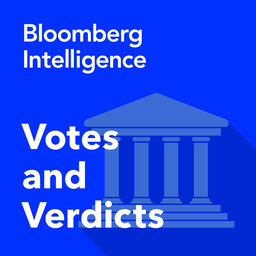OpenAI, Meta Fair Use Bids Risky in Copyright Drama
There are over three dozen US lawsuits between rights holders and developers of large language models, with the main point of contention being whether it was permissible “fair use” to train LLMs with copyrighted content. Newspaper organizations, authors, music publishers and visual artists have filed suits against OpenAI, Microsoft, Meta, Google and Anthropic, among other leading developers. Damages could run into the hundreds of billions of dollars, with the potential for milestone decisions this year. In this episode of Votes and Verdicts, Frankfurt Kurnit Klein & Selz partner Jeremy S. Goldman joins Bloomberg Intelligence analyst Tamlin Bason to discuss AI copyright issues and analyze how a recent rejection of fair use in an LLM dispute may influence pending cases.
 Votes & Verdicts
Votes & Verdicts


